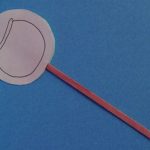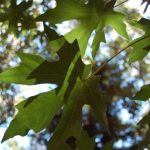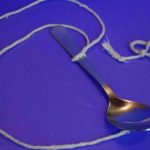Blog
Summer of Science Activity Series: Craters
Welcome to the third installment of our Summer of Science activity series!
We’re issuing a challenge to make your family’s summer the best one yet – by making it a Summer of Science. To help make it a science-filled summer, we’ll post a new science activity on our blog weekly, from now until August. Give each activity we post a try and take a photo of what you create – or whatever you discover in the process! For each photo you post and tag #CuriOdysseySummerSci on Flickr or Twitter, you’ll be entered into a drawing for CuriOdyssey passes.

In this activity, a pan full of baking soda is dusted on top with colored powder, and projectiles are dropped into the pan to create craters.
You’ll need:
Planetary material: baking soda (salt or granulated sugar also work)
Surface material: colored sand
Projectiles (you can use anything, but we’ve found that balls and beads work well).
Aluminum pan
What to do:
– Fill the aluminum pan at least 2 inches deep with baking soda.
– Gently level the surface by shaking the pan.
– You can choose whether to break apart any clumps. Clumps will inhibit the formation of an “ideal” crater, but they also look more planet-like than a perfectly smooth surface.
– Coat the top with just enough colored sand to obscure the original color.
– Drop projectiles into the baking soda and sand one at a time and observe the craters formed.
– Periodically homogenize the material by shaking the pan and re-covering it with new colored sand.
What’s happening here?
The size and velocity of a projectile will determine the size of a crater. When the projectile lands, it ejects mass from the crater, revealing the medium beneath the colored sand. Some material will be thrown out onto the color field and some surface material will be forced down into the crater, showing some of the mechanics at play when craters form. The mass of a projectile does not matter because gravity pulls all things the same way.
This means that a ping pong ball and a golf ball (that are roughly the same volume), dropped from some height at the same time, will land at the same time and form identical craters. Try it!
Questions to consider:
– Does the size and shape of your “meteor” affect the depth, size, and shape of your crater?
– Does the height or angle of impact effect the crater?
– Does crater size or shape change if the planetary material is more or less dense (sugar v. baking soda)?
Tag your photos on Flickr or Twitter with #CuriOdysseySummerSci and you’ll be entered into a drawing for a chance to win CuriOdyssey passes.
The more photos you post, the more times you’ll be entered.
Be sure to check back next week for a new Summer of Science activity!
– The CuriOdyssey Team
Join the CuriOdyssey Community
LOCATION
1651 Coyote Point Drive
San Mateo, CA 94401
Ohlone Land Acknowledgement
650-342-7755
info@curiodyssey.org
CuriOdyssey is a 501(c)(3) non-profit, Tax ID 94-1262434




